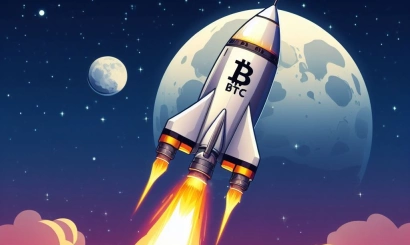Thursday the 13th. How the market will be affected by Ethereum's crucial update
Billions of dollars worth of coins are ready to hit the open market. Here's everything you need to know about the process and further implications of the second-largest cryptocurrency update
After a massive update to the Ethereum network, dubbed Shanghai, investors will have access to $31 billion worth of coins. About 18 million ETH are now in the stack, which is about 15% of the second-largest cryptocurrency's total turnover. The update will take place on the night of April 13.
The Shanghai update set affects Ethereum's so-called execution layer, the component of the network that deals with smart contracts and protocol rules. Another set of updates, dubbed Capella, will apply to Ethereum's consensus layer - the part of the network through which Ethereum validators enforce rules set in the execution layer. Both updates will take place at the same time, and the developers have combined them under a single name - Shapella.
This massive unlocking of coins marks the final phase of Ethereum's most significant update to date, called The Merge, after which the network has switched to the Proof-of-Stake (PoS) transaction validation algorithm. According to the rules of the algorithm, new ETH is distributed as a reward to those who hold the coins in stacking. The more ETH a so-called blockchain validator places in stacking, the more likely the Ethereum network will choose to process the transaction and reward it with new coins.
To motivate validators to keep the network running, a stacking fee of up to 5% per annum is paid to anyone who deposits coins in a special smart contract as collateral. The contract is called the Beacon Chain, and it was launched back in 2020 when the issuance of new coins in Ethereum was done by mining. Last September, developers successfully migrated the network to the PoS algorithm, but investors with coins locked into the Beacon Chain were technically unable to withdraw funds - both collateral and accrued income in the form of rewards.
It is Shanghai that solves this problem. After the update, about 500,000 validators will be able to withdraw a minimum pledge of 32 ETH (about $57,000) and accumulate rewards in the form of new coins. By the time the update was activated, investors had collectively earned about 1 million ETH - about 0.9% of Ethereum's market capitalization.
There are actually many more private investors in stacking - not everyone can afford to lock in 32 ETH and set up stacking hardware on their own. This is where large crypto exchanges and so-called liquid stacking services come to the rescue, combining user funds into a single pool with a user-friendly interface and remuneration for stacking in proportion to funds invested. The largest liquid stacking service, Lido, manages about 31% of all ETH in stacking.
How coin withdrawals work.
Before Shanghai, investors could only withdraw funds from stacking in the form of derivative tokens issued to users by liquid stacking services in proportion to their deposits. Validators are also separately credited with coins in the form of side income, such as so-called tips for confirming transactions, but access to new ETH remains blocked. The update will allow the accumulated coins to be withdrawn in stages, and it will give stacking pools control over the process.
Useful resources:
beaconcha.in, a transaction reviewer for the Beacon Chain stacking contract. You have to wait for an "epoch" numbered 194,048 in which the update is activated. When you view the epoch data, you can see how many coins will be available for withdrawal.
wenmerge.com - a site with a countdown to the update launch and statistics, including information about the queue of validators coming out of the stack.
etherscan.io - Beacon Chain contract address, available for viewing in the Ethereum blockchain browser.
dune.com - dashboard on the Dune service with full statistics on Ethereum stacking
The Coinbase exchange announced that it will begin processing withdrawal requests 24 hours after the update is complete. The exchange also said in a statement that due to high demand, it may take weeks or even months to process all ETH unlock requests. Lido administrators plan to delay the possibility of withdrawals until about mid-May to complete a code audit and make sure the process goes smoothly.
Technical limitations of the network are also holding back mass withdrawals. Only 16 partial withdrawal requests for stacking rewards can be processed every 12 seconds. Full withdrawals, including the deposit when the validator leaves the Ethereum blockchain completely, can also take a significant amount of time. Therefore, once Shanghai is activated, the withdrawal queue can become quite long.
Impact on prices
In the short term, the ability to access






